Structure-Based Varieties of Polymeric Nanocarriers and Influences of Their Physicochemical Properties on Drug Delivery Profiles
- PMID: 35112798
- PMCID: PMC8981462
- DOI: 10.1002/advs.202105373
Structure-Based Varieties of Polymeric Nanocarriers and Influences of Their Physicochemical Properties on Drug Delivery Profiles
Abstract
Carriers are equally important as drugs. They can substantially improve bioavailability of cargos and safeguard healthy cells from toxic effects of certain therapeutics. Recently, polymeric nanocarriers (PNCs) have achieved significant success in delivering drugs not only to cells but also to subcellular organelles. Variety of natural sources, availability of different synthetic routes, versatile molecular architectures, exploitable physicochemical properties, biocompatibility, and biodegradability have presented polymers as one of the most desired materials for nanocarrier design. Recent innovative concepts and advances in PNC-associated nanotechnology are providing unprecedented opportunities to engineer nanocarriers and their functions. The efficiency of therapeutic loading has got considerably increased. Structural design-based varieties of PNCs are widely employed for the delivery of small therapeutic molecules to genes, and proteins. PNCs have gained ever-increasing attention and certainly paves the way to develop advanced nanomedicines. This article presents a comprehensive investigation of structural design-based varieties of PNCs and the influences of their physicochemical properties on drug delivery profiles with perspectives highlighting the inevitability of incorporating both the multi-stimuli-responsive and multi-drug delivery properties in a single carrier to design intelligent PNCs as new and emerging research directions in this rapidly developing area.
Keywords: multi-drug delivery; multi-stimuli-responsive; nanomaterials; polymers; self-assembly.
© 2022 The Authors. Advanced Science published by Wiley-VCH GmbH.
Conflict of interest statement
The authors declare no conflict of interest.
Figures

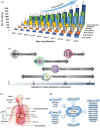
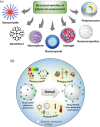

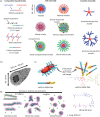

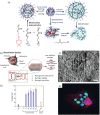
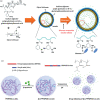
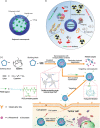



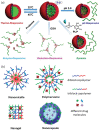

References
-
- Zhang P., Wang Y., Lian J., Shen Q., Wang C., Ma B., Zhang Y., Xu T., Li J., Shao Y., Xu F., Zhu J. J., Adv. Mater. 2017, 29, 1. - PubMed
-
- Guo X., Wei X., Chen Z., Zhang X., Yang G., Zhou S., Prog. Mater. Sci. 2020, 107, 100599.
-
- Oh C. H., Rugman A. M., Eur. Manage. J. 2006, 24, 163.
Publication types
MeSH terms
Substances
Grants and funding
LinkOut - more resources
Full Text Sources
